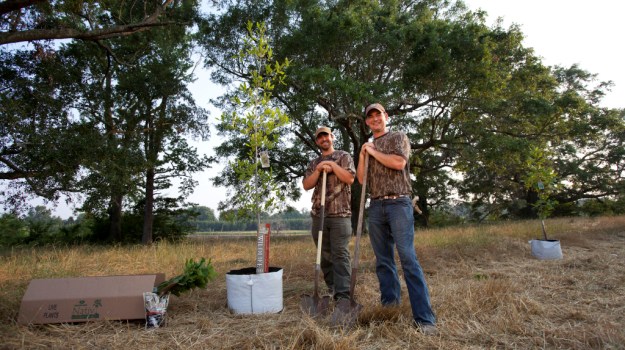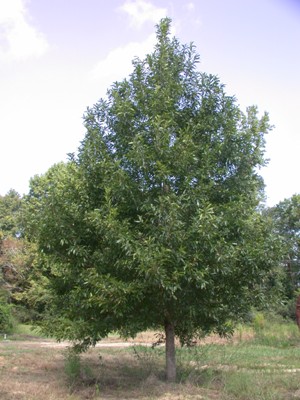
Editor’s Note: Jesse Raley is the marketing manager for Mossy Oak’s Nativ Nurseries. Good wildlife management and increasing wildlife on the properties you own or hunt on involves much more than just planting green fields. To have more wildlife on your property, consider planting fruit trees and nut trees and various types of grasses and shrubs that produce food and cover for wildlife. We’ve asked Raley to tell us why we need to consider planting trees, shrubs and native grasses to increase food and habitat for wildlife. By starting now, you can decide where and when to plant additional food and habitat for this fall.
“To start improving your property for wildlife, Nativ Nurseries recommends you plant a variety of trees rather than one specific type of tree,” Raley explains. “Many people will say, ‘We ought to plant all fruit trees, because they’ll start producing fruit quicker than oak trees.’ Or, they’ll take the opposite stance, and say, ‘We ought to only plant oak trees. Even though we’ll have to wait longer for them to produce acorns than fruit trees, the oak trees will produce nuts longer than the fruit trees will.’
 “We suggest you plant six to eight different varieties of trees, and that’s why Nativ Nurseries has developed wildlife packages. Some of these packages include oak packages, bottomland packages, fruit tree packages, whitetail packages, wild turkey packages and others. For instance, an oak package may have sawtooth oaks, water oaks, shumard oaks and white oaks in it. The secret for selecting a variety of oak trees for wildlife is you want oak trees that will drop acorns at different times during the fall and the winter. Then the wildlife always have some type of acorns to eat. For instance, if the sawtooth oaks start dropping their acorns in the early fall, the white oaks may begin dropping their acorns when the sawtooth stops. Then the shumard oak starts dropping acorns. So, at Nativ Nurseries we can put together a package of oaks that will start dropping acorns in the early-early fall and continue all the way through January.
“We suggest you plant six to eight different varieties of trees, and that’s why Nativ Nurseries has developed wildlife packages. Some of these packages include oak packages, bottomland packages, fruit tree packages, whitetail packages, wild turkey packages and others. For instance, an oak package may have sawtooth oaks, water oaks, shumard oaks and white oaks in it. The secret for selecting a variety of oak trees for wildlife is you want oak trees that will drop acorns at different times during the fall and the winter. Then the wildlife always have some type of acorns to eat. For instance, if the sawtooth oaks start dropping their acorns in the early fall, the white oaks may begin dropping their acorns when the sawtooth stops. Then the shumard oak starts dropping acorns. So, at Nativ Nurseries we can put together a package of oaks that will start dropping acorns in the early-early fall and continue all the way through January.
“At Mossy Oak’s Native Nurseries, we try to pick the trees that will produce best in each section of the country where they’ll be planted. After our customers have run soil sample tests, once we know where they live, they can call us at 662-494- 4326, and we’ll select the trees that will be best planted in their area.”
You can learn more about species selection and site selection by watching the videos on the Nativ Nurseries’ YouTube page.
Day 1: Nativ Nurseries’ Jesse Raley Tells Us How to Improve Our Land for Wildlife
Tomorrow: Nativ Nurseries’ Jesse Raley Tells about Fruit Trees for Wildlife




























